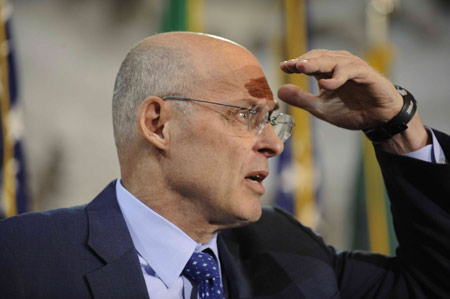
Treasury Secretary Henry Paulson Monday listens to questions at a news conference. He unveiled the most wide-ranging plan to overhaul the U.S. financial regulatory system since the Great Depression.
The long-term recommendation is to create an entirely new regulatory structure using an objectives-based approach for optimal regulation. The structure will consist of a market stability regulator, a prudential regulator and a business conduct regulator with a focus on consumer protection.
Analysts said according to the plan, the U.S. government will merge the Securities and Exchange Commission with the Commodity Futures Trading Commission, bringing oversight of U.S. securities and futures markets under a single regulatory umbrella.
The plan would give Federal Reserve more power to oversee Wall Street securities firms which now have access to the central bank's emergency lending facilities.
"The Fed would have the authority to go wherever in the system it thinks it needs to go for a deeper look to preserve stability," said Paulson.
He acknowledged that his plan will take years to complete and extend beyond the current period of market turmoil.
"Once we are through this period of market stress, we need to begin the serious work of modernizing and reforming the structure, which will require a great deal of discussion and many years to complete," he said.
"We will not seek to implement (the plan) on a pace or in a manner that interferes with our first priority of working through this current period of market difficulty," Paulson said.
House Financial Services Committee Chairman Barney Frank welcomed Paulson's ambitious plan, saying it was a "constructive step forward." But he also said Congress would not give the Federal Reserve more powers under this plan.
Frank's reactions were echoed by some banking groups.
"Dismantling the thrift charter and crippling state banking charters will weaken banking in America," Edward Yingling, president of the American Bankers Association, was quoted as saying.
(Xinhua News Agency April 1, 2008)